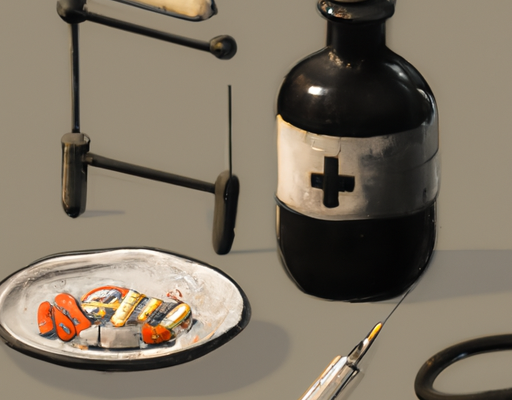Background
Contact dermatitis is a common condition affecting the skin, which can cause irritation and inflammation. It can be caused by an allergic reaction to certain substances, as well as direct contact with irritants such as detergents, soaps, plants, or cosmetics. It is generally a harmless but annoying condition that can cause significant discomfort. In more severe cases, contact dermatitis can lead to cracking, peeling and blisters that can become infected and cause further problems. It is important to take steps to prevent and protect against contact dermatitis, as it can have serious consequences if left untreated. By paying careful attention to your environment, avoiding known irritants and allergens, and taking proper care of your skin, you can reduce your risk of developing this unpleasant rash.
Causes
Contact dermatitis is a type of skin inflammation that is caused when the skin comes in contact with an allergen or something that irritates it. It can present differently from person to person depending on their skin type and the cause. Common causes of contact dermatitis include exposure to soaps, detergents, solvents, metals, jewelry, and even certain types of fabrics. Allergens like poison ivy, poison oak, and poison sumac can also cause it, along with a variety of environmental factors. A weakened immune system can also lead to contact dermatitis, as can reactions to medications, fragrances, or even contact lens solutions. It is also possible to develop an allergy over time to something that the skin has been exposed to in the past.
Symptoms
Contact Dermatitis is a type of skin inflammation caused by irritants, such as detergents, cosmetics, plants, or fabrics. It is not contagious and can range from mild to severe in intensity. Symptoms of contact dermatitis often vary depending on the severity of irritation but may include redness, itching, blisters, swelling, dryness, and scaling of the skin. More severe cases can cause burning, pain or extreme itching that may interfere with daily activities. If the symptoms of contact dermatitis persist, or if they worsen or spread, it is important to seek medical care. Treatment may include topical steroids or antibiotics, as well as creams or ointments to help reduce irritation and strengthen the skin’s natural barrier. In severe cases, oral medications may be necessary to reduce the inflammation. The key to controlling contact dermatitis is to identify and avoid contact with substances that cause irritation and to treat inflamed skin properly.
Diagnosis
Contact dermatitis is a common skin condition that occurs when the skin comes into contact with certain irritants or allergens. Symptoms of contact dermatitis can range from mild to severe, depending on the severity of the contact. It can cause red, itchy, and burning skin, as well as fluid-filled blisters. Diagnosis of contact dermatitis is based on medical history and physical examination. During the physical exam, the doctor will inspect the skin for signs of inflammation, such as redness, swelling, and blisters. The doctor may also order allergy tests, such as patch testing or skin prick testing, to identify the exact cause of the rash. Prompt diagnosis and treatment of contact dermatitis is essential to prevent long-term damage to the skin.
Treatment
Contact Dermatitis is a form of skin irritation that occurs when the skin comes in contact with a particular allergen or irritant. It is caused by a reaction within the epidermis, which is the top layer of skin. It appears as red, itchy, bumpy rashes on the skin. Treatment of contact dermatitis requires identifying and avoiding the allergen or irritant that triggered the reaction. It also includes managing the symptoms:
- Applying cool compresses or wet bandages to the affected part of the skin
- Taking medications such as antihistamines or corticosteroids
- Applying topical ointments to reduce itching
- Using protective clothing or barrier creams
Contact dermatitis can be a serious and uncomfortable condition, but with the right identification and treatment, it can be managed and the symptoms relieved. Consultation with a dermatologist is recommended if the rash persists or is severe.
Prevention
Contact dermatitis is an inflammatory skin condition caused by direct contact with certain substances. It is characterized by redness, itching, and burning of the skin. Health prevention is the best approach to avoiding contact dermatitis. To prevent contact dermatitis, it is important to always read product labels before using a new product. Wearing protective clothing such as long sleeves and gloves when using hazardous materials can also help. Additionally, it is important to use a barrier cream or lotion to protect the skin in areas that come into contact with harsh substances. Lastly, it is important to keep the skin clean and moisturized to reduce the risk of contact dermatitis.
Complications
Contact Dermatitis is an inflammatory skin condition triggered by direct contact with a substance that irritates the skin, or by an allergic reaction to a substance. Although it is usually not a serious condition, contact dermatitis can cause a range of uncomfortable symptoms, including redness, itching, burning, and stinging. In some cases, it can also lead to more serious complications. In more severe cases, it can cause large areas of broken skin, blisters, and even an infection. Contact dermatitis can become unbearable if the skin is not treated and cleaned properly, leading to secondary skin infections, ranging from superficial bacterial infections to deeper fungal infections. In extreme cases, the condition can result in open lesions that may become chronic. If the skin is not sufficiently hygienic and moisturized, it can develop thick layers of hardened skin that may require a dermatologist’s help to treat.





No Comments